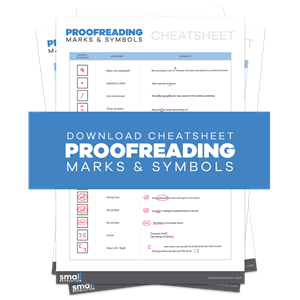Coffee, check. Exciting ideas for your next piece, check. Drive and motivation, check. Right! You’re ready to light up your page with fantastic content.
One hour into firing up the page, and you’ve only lit it up with two paragraphs.
And this includes the brief introduction!
What happened?
This article aims to help you become a faster writer with four easy-to-implement ideas.
If you’re in a hurry, here is a brief overview of the points in this list:
- Be zen and eliminate all distractions.
- Start with an outline.
- Write first, edit later.
- Practice.
Let’s dive in and get a deeper understanding.
Step 1: Be Zen and Eliminate All Distractions
First, get in the right sitting position at your clean, uncluttered, dedicated work-station.
- Sit up straight and don’t lean over toward your computer.
- Have your arms at a 90-degree to 100-degree angle to your keyboard; don’t bend them up or down.
- Your feet should be flat on the floor or a footrest, and your knees should be at the same level as your hips or just a little lower.
This posture is especially optimal for typing, but it works for any work that requires you to be seated for long periods. Your blood flow is unobstructed, and the improved circulation aids your concentration. You’ll also be at a lower risk of back injuries because your spine is in an upright position.
This next point might sound as though it’s coming from a yoga instructor, so get ready. It is vital to be in a zen state of mind when you set out to work.
You need positive energy to achieve positive results. Writing requires a clear mind, ridden of emotional turbulence.
De-stress quickly in these three easy ways:
- Let some natural light into your workstation
- Consciously reconnect with your breathing. Inhale deeply through your nose and exhale through your mouth. While doing this, visualize yourself taking in cool, blue, fresh air and releasing hot, red, stale air
- Do some quick stretches
A handy tool you should try out is Ommwriter. It’s a nifty web application aimed at writers and markets itself as the perfect place to think and write. It blocks out the distractions and uses soothing backgrounds and music to get you to focus on the work at hand.
The Ommwriter team lets you decide how much you want to pay for the program based on a minimum price of $6.87.
Check it out and see if it works for you.
Step 2: Start with an Outline
The achievement of any goal requires proper planning. Before starting your writing project, you need an outline to give you direction and guide you as to what to write, and when to write it.
Even if you’re able to type 2,000 words a minute, it won’t help if you don’t know what to write.
Here’s how you can go about developing a good outline:
- Find the big idea: You need to figure out what your audience will gain from your content. You should also base your headline on this big idea.
- Identify your target audience: You most likely already realize who your audience is before you begin writing. When you take it a step further and list your audience down as part of your outline, you will cement your sense of direction. Your content will be more focused and useful to your readers because you will write with your target audience in mind.
- Figure out the user intent: User intent is what the reader is looking for when they make a search query. The intention goes beyond the keywords entered in the search box; it also encompasses the context and the specific goal behind the user’s search. When you understand the user’s search intent, you will give more relevant answers to their questions.
- Main body: List the main ideas that will constitute your piece after you have successfully determined your targeted users and their search intent. These are the key points and headings, the conclusion, and the calls to action.
Think of an outline as your writing map. It gives you direction and gets you to your destination faster and more efficiently.
When you’re happy with your outline, start writing; this is a good segue into our next point.
Step 3: Write First, Edit Later
Don’t analyze yourself into paralysis while writing. Just write.
Preferably after a few hours’ break, come back and begin editing your work. Simultaneously writing and editing will only slow you down.
It’s tempting to go over your work to make corrections and look for the best words and idioms while you write. Realize that this wastes a lot of time and ignore your inner perfectionist until you finish writing.
The goal is to get to a “flow state,” where you’re actively immersed in the writing process and enjoying it. You need to remain in this optimum state until you complete the project at hand. Don’t interrupt the flow.
Start with what you have, or in this case, what you know. Write directly from your mind without caring too much about getting all the details correct at first. When you hit a snag, type “TK” at the point where you get stuck.
“TK” is writer jargon for “to come.” It means that you need to come back to this point with more information or verified facts.
There are no English words that have those two letters following each other, and this makes it easier for you when using the ‘Find’ function in your editor to locate the “TK” points. Just press Command + F on your Mac keyboard or Ctrl + F on your Windows device to use this function.
After you’ve put down what you know, you can begin the editing and research process. If you do this while you’re writing, you’ll most likely fall into a research rabbit hole and end up on a path that is way off-track from the one you initially intended.
Try this, and you might even surprise yourself with how much you already knew.
Step 4: Practice
Practicing is an essential step on this list. After internalizing the tips and tricks listed above, you need to put them into action every day.
Being able to write faster and better will not just happen. You need to hone your skills and make them perfect. Utilize every opportunity you get. Race against yourself by setting timers and working hard to beat them.
Gradually reduce the time you take to write by employing the methods explained in this article and writing daily.
Use online fast-typing games like freetypinggame.net and wordgames.com to improve your skills while having fun at the same time.
You can also enjoy testing your speed using the platforms 10fastfingers and Key Hero.
Another essential step to take is to get educated. Nobody knows everything about everything. Even the most seasoned professionals still take time to learn more about their craft so they can perform at their absolute best.
To Sum It Up
In the early days, it took people ages to be able to perfect their writing skills because resources such as these weren’t readily available. Luckily for you, now they’re right at your fingertips.
Use these tactics in your unique combination to fit your needs. Find your perfect match by combining and rearranging the steps as you please. The end justifies the means here.
Take action and practice your way into writing faster, turning in more quality work, and earning more money.
Remember, Small Revolution is your friend. Take one of the writers’ courses available now and boost your value as a writer. As a bonus, there is fantastic support staff that will tenderly guide you through the entire process.
The ball is in your court now.


